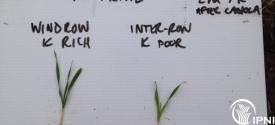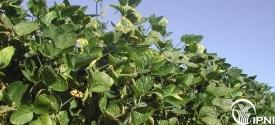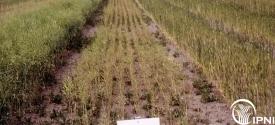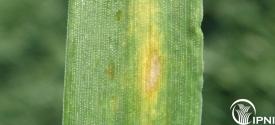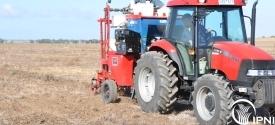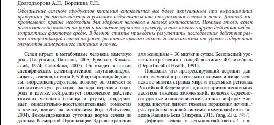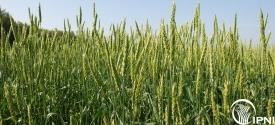Barley
Presentación realizada en la jornada organizada por CRIATA y la CEI Barrow (INTA-MA Buenos Aires) en Tres Arroyos (Buenos Aires) el 3 de Mayo de 2018.
Trabajos publicados en la revista Informaciones Agronómicas de Hispanoamérica (2011-2017) e Informaciones Agronómicas del Cono Sur (2006-2017).
Agriculture in Uruguay initially developed in high potassium (K) soils, under conventional tillage and crop rotations that required no K fertilizer. The scenario changed during the last decades driven ...
Paper and presentation at the 2016 Soil Science Congress of Russia
Presentación realizada en el seminario de ASP en Coronel Suárez (Buenos Aires) el 18 de Mayo de 2016, en colaboración con el Dr. Nahuel Reussi Calvo de Fertilab y FCA(UMdP)-CONICET
 Estrategias de manejo para optimizar el rendimiento y la calidad en cultivos invernales
Estrategias de manejo para optimizar el rendimiento y la calidad en cultivos invernalesVideo y archivo de la presentación realizada en el Congreso "A Todo Trigo 2016" organizado por la Federación de Acopiadores y SEMA en Mar del Plata el 5 y 6 de Mayo de 2016. Link al video http://www. ...
Location: Krasnodar Krai, Southern Federal District. Objectives: 1) Optimize the rates of S-containing fertilizers (NPKS and NPS). 2) Optimize the N sources for top-dressing in winter barley and winte ...
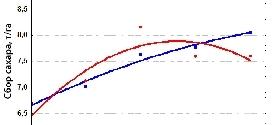 Результаты научного проекта по совершенствованию рекомендаций по внесению калийных удобрений в России в 2014
Результаты научного проекта по совершенствованию рекомендаций по внесению калийных удобрений в России в 2014С.Е. Иванова, В.А. Романенков, Л.В. Никитина
Crop response to S-containing fertilizers and various N sources is studied under winter barley – sugar beet – winter wheat – maize rotation.
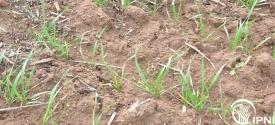 Project Description - Potassium responses in winter crops and pastures
Project Description - Potassium responses in winter crops and pasturesFollowing the market development work in Queensland over the past few years, there are several areas that are proposed for attention during 2015. Monitoring of the Queensland sites will be continued w ...
This Manual contains information on soil and plant sampling and analysis, as well as recommendations for selecting appropriate fertilisers for field crops, vegetables, fruit and viticulture. The most ...
 Potassium responses in winter crops and pastures
Potassium responses in winter crops and pasturesIn collaboration with NSW DPI and the GRDC, the response of wheat and barley (Warndoo 2015) and wheat, triticale and canola (Breadalbane 2015) are being investigated. Responses of wheat and canola to ...
В.В. Никитин, Агрохимия, №2, 2013
 Последствия отчуждения соломы привозделывании пшеницы и ячменя:обзор литературы
Последствия отчуждения соломы привозделывании пшеницы и ячменя:обзор литературыД.Д. Таркалсон, Б. Браун, Г. Кок и Д.Л. Бьорнберг
Presentacion realizada en las joranadas regionales de ASP en Junin y Lincoln (Buenos Aires) el 8 y 9 de Mayo de 2012.
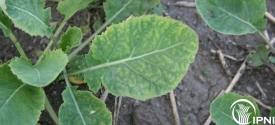 More Profit from Crop Nutrition: Micronutrient Survey
More Profit from Crop Nutrition: Micronutrient SurveyA scoping study to develop a risk assessment for micronutrient deficiency in the grains industry.
Агафонов Е.В., Каменев Р.А., 2011. Агрохимия 1: 20-27.
Минеев В.Г., Лебедева Л.А., Васильева Н.Г. 2010. Агрохимия, 6: 50-58.
 Better Fertilizer Decisions for Crops
Better Fertilizer Decisions for CropsThe collation of 5000 field experiments on crop fertilizer responses from across Australia.
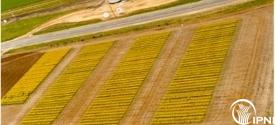 Dahlen Long-term Nitrogen and Phosphorus Recovery Experiment
Dahlen Long-term Nitrogen and Phosphorus Recovery ExperimentLong term crop responses to applied N and P.
Las MPM para los Cultivos y Sistemas de Producción
Large and regular sized urea applied with and without urease and nitrification inhibitors, surface applied in fall or spring under no-till cropping.
Results of 2007 Crop Nutrient Deficiency Photo Contest On this page, we highlight winners for each of the four categories. The entries were judged on the overall quality of the image as well as the su ...
The use of polymer additives to regular soluble fertilizers to increase the uptake of fertilizer nutrieIt is thought to slow down the reaction of the fertilizer nutrient ions and molecules with soil c ...
The use of polymer additives to regular soluble fertilizers has been shown to increase the uptake of fertilizer nutrients into target crops. The mechanism of activity of the polymers is thought to slo ...
Natural gas represents a major portion of the cost of ammonia production, and concern continues about effects on nitrogen (N) fertilizer prices.
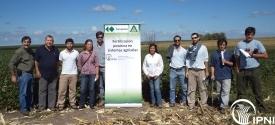 Exploration of Responses to Potassium in Western Uruguay
Exploration of Responses to Potassium in Western UruguaySeveral regions of Uruguay has recently shown K deficiencies and responses. This project looks to determine the different areas with K deficiency, evaluate responses in the main field crops, and provi ...
A multi-stakeholder committee initiative, funded through a conservation grant, to develop a list of management practices applicable in North Dakota.
Crops were planted in flats of soil are prepared to simulate a seed-bed and a low-disturbance opener configuration (10% seed bed utilization). Eleven commonly grown Saskatchewan crops (wheat, barley, ...
The adoption of no-till seeding systems in western Canada has been driven by a variety of factors, moisture conservation and economic efficiency likely the major ones. This project was conducted to ev ...
Determine the effect of phosphorus, potassium and sulfur on the yield and quality parameters of malt barley across the agro-ecological regions of Alberta.
To determine availability of residual P and Cd from long-term P accumulations for plant uptake and movement to water, as affected by soil type and environment, and to determine the rate of P and Cd de ...
A study to identify mineral nutrient removal in the harvested portion of crops grown in western Canada.
Demonstrate that we can accurately quantify changes in soil C content by estimating soil C changes through the use of simulation models.
The addition of potassium (K) fertilizer to starter fertilizer blends is becoming a common practice in many areas of western Canada with high soil test K levels. Specific crops, such as malting barley ...
Assess whether or there has been a significant change in soil quality and/or yield trends in the 6 years since the field soil in this study were converted to no-tillage from conventional tillage.
This study evaluated seed-placed and broadcast B. When seed-placed B was spread over 25% of the seedbed, higher application rates (i.e. 2-3 lb/A) had a minimal effect on barley and canola germination, ...
Research investigating if polymer coated KCl will enhance the nutrient use efficiency of K and Cl, and reduce the damaging effect of higher rates of seed placed fertilizer.
Assess the impact of fertilizer placement on weeds in no-till seeding systems.
Determine the agronomic information required to choose the optimum nutrient rates and assess the economic the benefits of variable rate fertilization.
Questions that now remain unanswered are urea impacts on calcareous soils and the role that ammonium sulphate might play in various mixes with urea and what the safe rates of combined N,P,K and S fert ...
Adjustments to nitrogen and phosphorus fertilization rates may be required in fields which receive a no-till (herbicide) fallow treatment as compared to the conventional tillage fallow. For example, t ...
Evaluate the effects of row spacing, seeding rate, and N and P fertilizer placement in spring and winter wheat, barley, durum and flax under no-till cropping.
Barley and canola was grown at 46 sites in Alberta to evaluate response to P fertilizer and determine the ability of various soil test P methods to predict crop response.
Determine the influence of historic phosphorus application on soil quality and nutrient supplying power in a low input irrigated crop rotation.
P sorption and known rates of addition and removal to explain rates of P removal (i.e. uptake) by barley under uncontrolled field conditions and different P fertilizer treatments.
The effect of Cl fertility on small grain production is currently of great interest in the Northern Great Plains. Research from South Dakota and Montana has shown that application of fertilizers conta ...
Document and summarize the scientific literature concerning ground water nitrate problems in Western Canada and provide a baseline for future studies.
In the last decade the need to fertilize soils rather than fields has been recognized and has led to the concept of variable fertilizer rates. Variable fertilizer rates have been advocated for a numbe ...
Identify the preferred analytical methods for the determination of available P over a wide range of soils in Alberta.
For optimum economic returns, fertilizer applications should be managed to apply sufficient N to attain the highest possible yield, without increasing protein content beyond the acceptable levels. For ...
Assess the chloride fertility status of Manitoba soils and determine the effects of chloride fertilization on plant nutrition, plant disease and yield of wheat and barley.
Assessment of location of fertilizer in relation to the seed furrow.
Assessing the effect of moisture availability and supply on barley growth and yield.
Determine the effects of a large P fertilizer application on subsequent crop yields, P availability, interactions with other nutrients, and economic feasibility.

